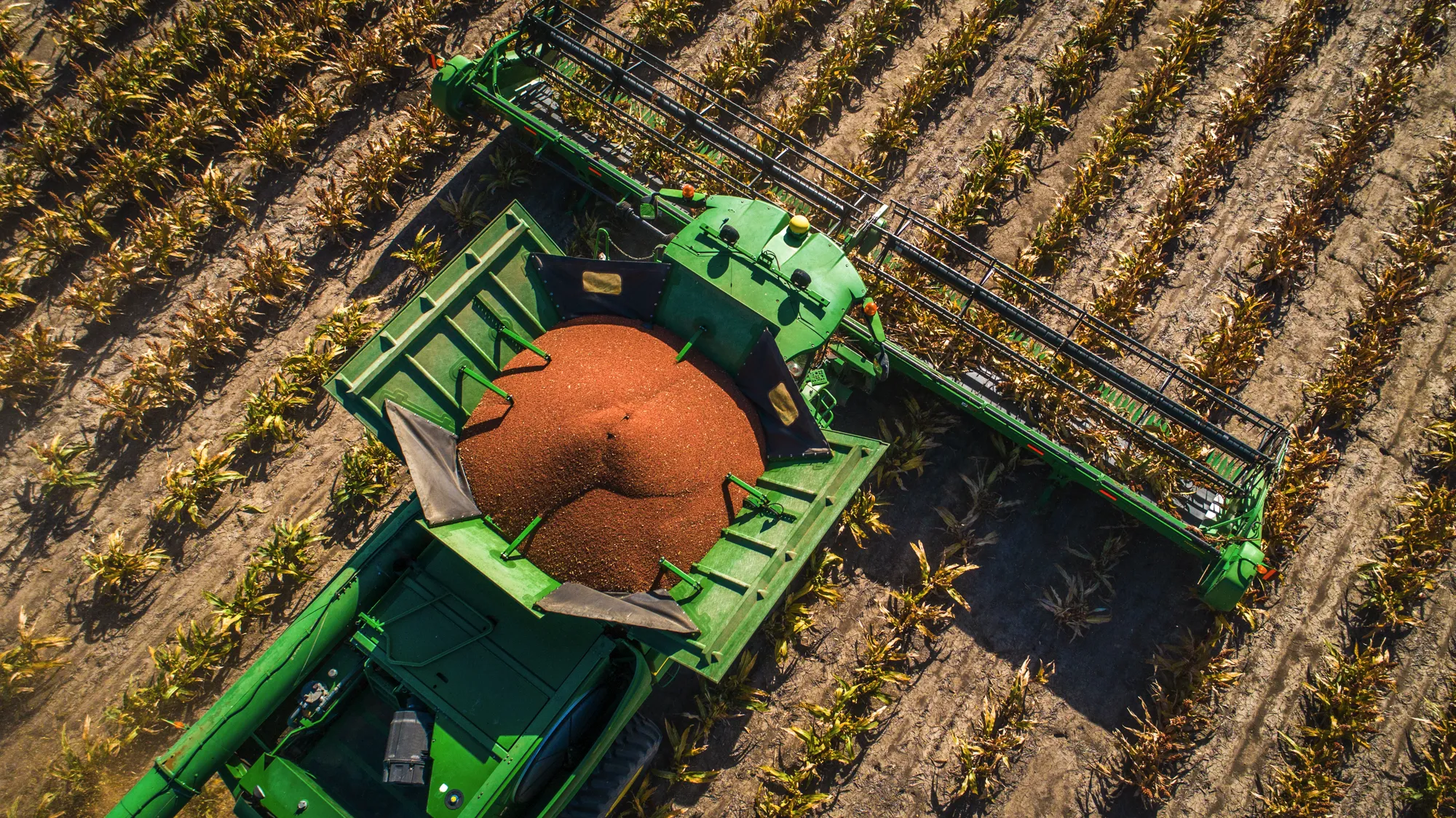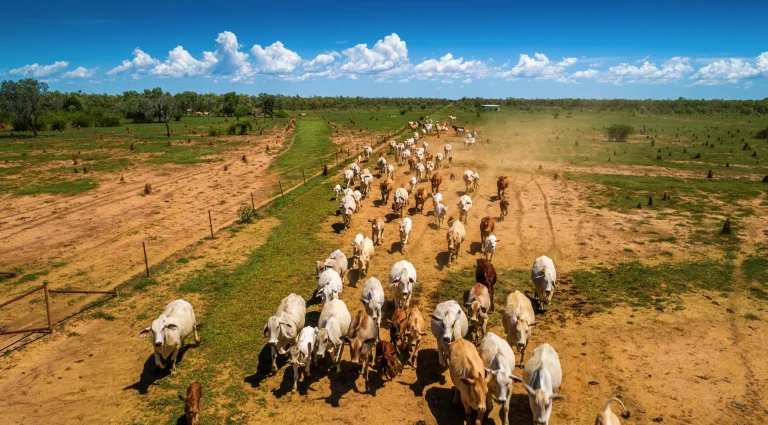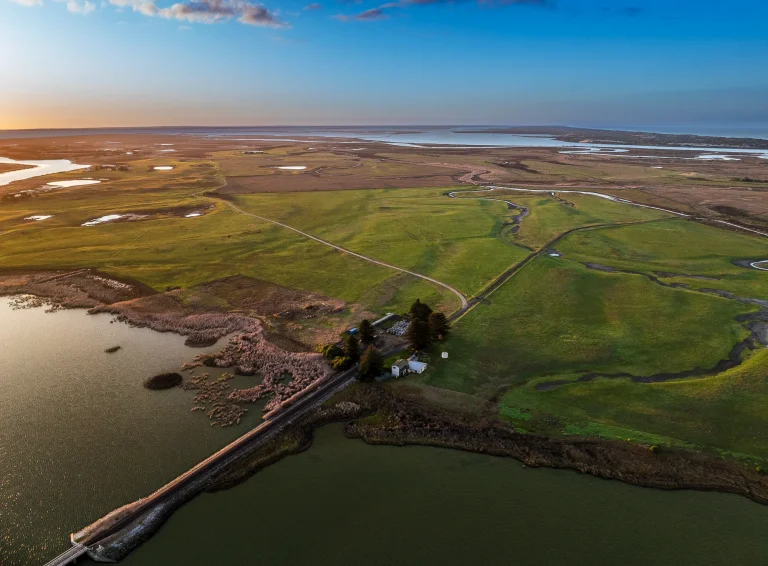- Articles
- Dairy Farming
- Market Analysis of Dairy Farming Property Trends: Comprehensive Industry Assessment
Market Analysis of Dairy Farming Property Trends: Comprehensive Industry Assessment
The dairy farming property market demonstrates distinct characteristics and evolving trends that reflect changing industry dynamics, technological advancement, and shifting economic conditions across Australia’s diverse agricultural regions. Conducting comprehensive market analysis of dairy farming property trends becomes essential for investors, farmers, lenders, and advisors seeking to understand value drivers, investment opportunities, and strategic positioning within this specialized agricultural sector. At Agribusiness Horizons, we provide detailed market intelligence and trend analysis that examines dairy property values, transaction patterns, and emerging opportunities across different regions and production systems. This analysis explores the key factors shaping dairy farming property markets and their implications for stakeholders throughout the dairy industry value chain.
The dairy property sector exhibits unique market characteristics influenced by milk pricing cycles, processing relationships, regulatory frameworks, and technological evolution that create distinct investment considerations compared to other agricultural property categories. Understanding these specialized dynamics enables informed decision-making and strategic positioning within dairy property markets.
Industry Fundamentals and Market Drivers
Australia’s dairy industry demonstrates resilience and adaptation through changing market conditions, with property values reflecting underlying industry health and long-term viability prospects across different production regions and operational systems.
Milk production capacity and processing infrastructure significantly influence regional dairy property values through their impact on operational efficiency and market access. Properties located near modern processing facilities typically command premium valuations due to reduced transportation costs and enhanced operational flexibility.
Export market development drives demand for dairy properties positioned to access international markets, particularly in Asia where growing middle-class populations increase consumption of premium dairy products. Properties with export-oriented processing relationships often demonstrate superior value appreciation and market stability.
Industry consolidation trends affect property demand and pricing patterns as larger operations seek expansion opportunities while smaller farms consider exit strategies. Understanding consolidation impacts helps assess individual property positioning and market dynamics.
Seasonal production patterns and climate reliability influence regional property values through their impact on pasture quality, feed costs, and operational consistency. High-rainfall regions with reliable seasonal patterns typically maintain premium property valuations.
Technology adoption and automation trends increasingly influence property values as modern dairy operations require sophisticated infrastructure and systems that enhance efficiency while reducing labor requirements and operational costs.
Government policy developments including environmental regulations, animal welfare standards, and trade relationships affect industry confidence and property investment attractiveness across different regions and production systems.
Regional Market Variations and Characteristics
Different Australian dairy regions demonstrate distinct market characteristics and value trends reflecting local advantages, infrastructure development, and competitive positioning within national and international dairy markets.
Victoria’s established dairy regions including Gippsland and Western Victoria maintain strong property values supported by reliable rainfall, established infrastructure, and proximity to major processing facilities. These regions demonstrate consistent demand from both domestic and international investors.
New South Wales coastal and tablelands regions offer diverse dairy opportunities with varying market characteristics based on climate conditions, processing access, and urban proximity that influence property values and investment attractiveness.
South Australia’s dairy regions benefit from consistent production conditions and established market relationships while demonstrating stable property values and ongoing investor interest in expansion opportunities.
Western Australia’s dairy industry concentration in the southwest region creates distinct market dynamics with limited property availability and strong local demand supporting stable values and selective investment opportunities.
Tasmania’s dairy industry demonstrates unique characteristics with island production advantages, processing concentration, and export positioning that influence property values and market dynamics differently from mainland regions.
Queensland’s subtropical dairy regions offer year-round production opportunities with distinct market characteristics and investment considerations related to climate advantages and market positioning.
Emerging dairy regions and development opportunities create new market segments with different risk-return profiles and investment characteristics compared to established traditional dairy areas.
Property Value Drivers and Assessment Factors
Comprehensive market analysis of dairy farming property trends requires understanding the multiple factors that influence property valuations and market attractiveness across different dairy enterprises and regional markets.
Milk production capacity represents the primary value driver for dairy properties, with higher-producing operations and superior infrastructure commanding premium valuations. Properties with documented production excellence and efficiency demonstrate enhanced market appeal.
Infrastructure quality and modernization significantly influence property values through their impact on operational efficiency and competitive positioning. Modern milking facilities, automated systems, and efficient layouts provide competitive advantages that support premium valuations.
Herd genetics and production performance affect property values through their contribution to operational profitability and breeding program effectiveness. Properties with superior genetics and performance records often command premium pricing.
Water security and irrigation infrastructure become increasingly valuable as climate variability affects feed production and operational reliability. Properties with secure water rights and efficient irrigation systems demonstrate enhanced market appeal.
Environmental compliance and sustainability credentials increasingly influence property values as regulatory requirements and market expectations emphasize responsible farming practices and environmental stewardship.
Processing relationships and market access affect property values through their impact on milk pricing, operational security, and business continuity. Properties with strong processor relationships often demonstrate superior market stability.
Development potential and expansion opportunities influence property values through their capacity to enhance operational scale and efficiency while accommodating industry evolution and modernization requirements.
Technology Impact and Infrastructure Evolution
Technological advancement significantly influences dairy property markets through changing infrastructure requirements, operational efficiency opportunities, and competitive positioning considerations that affect property values and investment attractiveness.
Automated milking systems and robotic technology create new infrastructure requirements while offering labor efficiency and operational advantages that influence property values and modernization needs. Properties with advanced automation often command premium valuations.
Precision agriculture and data management systems enhance operational efficiency while providing competitive advantages that influence property attractiveness and value appreciation potential for technology-forward operations.
Feed management and nutrition optimization technologies improve operational efficiency while reducing costs and environmental impact. Properties with advanced feed systems demonstrate enhanced operational appeal and value positioning.
Breeding technology and genetic advancement capabilities affect property values through their contribution to herd improvement and competitive positioning within genetic markets and production excellence.
Environmental monitoring and compliance systems become increasingly important for regulatory compliance and operational optimization while influencing property values and operational requirements.
Communication and connectivity infrastructure supports modern dairy management while enabling remote monitoring and operational optimization that enhances property appeal and management efficiency.
Energy efficiency and renewable energy systems provide cost advantages while supporting sustainability objectives that enhance property values and operational competitiveness.
Financial Performance and Investment Metrics
| Market Segment | Investment Characteristics | Return Drivers | Risk Considerations |
|---|---|---|---|
| Intensive Dairy Operations | High capital requirements, strong returns | Production efficiency, milk premiums | Market volatility, regulatory compliance |
| Extensive Grazing Systems | Moderate capital needs, land appreciation | Land values, operational efficiency | Climate risks, market access |
| Integrated Processing | Very high investment, specialized returns | Value capture, market control | Technology risks, capital intensity |
| Emerging Technologies | Variable investment, innovation returns | Efficiency gains, competitive advantage | Technology risks, adoption challenges |
Financial performance metrics and investment characteristics demonstrate varying patterns across different dairy property segments and operational systems that influence market attractiveness and investor positioning.
Agribusiness Horizons’ Dairy Market Intelligence
At Agribusiness Horizons, our specialized approach to market analysis of dairy farming property trends combines comprehensive industry knowledge with sophisticated market intelligence capabilities that provide clients with accurate assessments and strategic guidance for dairy property investment and planning decisions. We understand that dairy property markets require specialized analysis that accounts for industry dynamics and regional variations.
Our market intelligence services provide current pricing information, transaction analysis, and trend identification that support informed decision-making and strategic positioning within evolving dairy property markets across different regions and operational systems.
Our dairy industry expertise encompasses production systems, market relationships, and regulatory requirements that influence property values and investment attractiveness while providing comprehensive understanding of market dynamics and development trends.
Our analytical capabilities encompass property valuation, investment analysis, and market forecasting that support strategic planning and investment decision-making across diverse dairy property opportunities and market conditions.
Our professional network includes dairy industry specialists, market participants, and technical experts who provide specialized knowledge and market insights that enhance our analysis and advisory capabilities for complex dairy property assessments.
Market Demand and Buyer Characteristics
Understanding buyer demographics and demand patterns provides insights into market dynamics and pricing trends that influence dairy property transaction activity and value appreciation across different market segments.
Established dairy farmers represent the primary buyer category for dairy properties, typically seeking expansion opportunities, operational consolidation, or succession planning solutions that enhance operational scale and efficiency while maintaining family farming traditions.
Corporate agricultural investors increasingly participate in dairy property markets through portfolio development strategies and operational integration objectives that provide capital access and professional management capabilities for larger-scale operations.
International investors demonstrate growing interest in Australian dairy properties driven by food security considerations, investment diversification objectives, and access to premium agricultural assets with established market positioning.
Succession and generational transfer considerations create specific buyer patterns as younger farmers seek entry opportunities while older operators pursue retirement and wealth realization strategies that influence market dynamics and pricing patterns.
Investment funds and institutional investors explore dairy property opportunities through portfolio diversification strategies and alternative investment approaches that provide exposure to agricultural assets and inflation protection characteristics.
Development and conversion investors assess dairy properties for alternative uses including residential development, tourism ventures, or alternative agricultural enterprises that may influence property values and market dynamics.
Regulatory Environment and Policy Impacts
Regulatory frameworks and policy developments significantly influence dairy property markets through their impact on operational requirements, market access, and investment attractiveness across different production systems and regional markets.
Environmental regulations including water usage restrictions, nutrient management requirements, and conservation obligations affect operational costs and property values while influencing investor confidence and development potential.
Animal welfare standards and compliance requirements increasingly influence operational costs and infrastructure needs while affecting market positioning and consumer acceptance for dairy products and property investment appeal.
Food safety regulations and quality assurance requirements affect market access and operational procedures while influencing compliance costs and competitive positioning for different property types and operational systems.
Planning regulations and zoning classifications influence development potential and operational flexibility while affecting property values and investment attractiveness for different dairy enterprises and market segments.
Water allocation policies and trading systems affect property values through their impact on operational security and expansion potential while creating market opportunities for water-efficient operations and allocation optimization.
Trade policy developments and international agreements influence export opportunities and market access while affecting industry confidence and property investment attractiveness across export-oriented dairy regions.
Climate and Environmental Considerations
Climate factors and environmental considerations increasingly influence dairy property markets through their impact on operational sustainability, regulatory compliance, and long-term viability across different regional markets.
Rainfall reliability and seasonal patterns significantly influence regional property values through their impact on feed production, operational costs, and production consistency that affect profitability and investment attractiveness.
Climate change adaptation and resilience planning affect property values through their influence on long-term viability and operational sustainability while requiring infrastructure investment and management adaptation.
Drought susceptibility and risk management capabilities influence property values and operational planning while requiring appropriate infrastructure and management systems that ensure operational continuity during adverse conditions.
Flood risks and water management considerations affect property values and operational planning while requiring appropriate infrastructure and management systems that protect assets and maintain operational capacity.
Carbon sequestration opportunities and environmental credits provide additional revenue potential while supporting sustainability objectives that enhance property values and market positioning for environmentally conscious operations.
Biodiversity conservation and habitat management may provide funding opportunities while enhancing property values and operational sustainability through integrated land management approaches.
Market Timing and Investment Strategies
Strategic timing considerations influence dairy property investment success through their impact on acquisition costs, market conditions, and operational optimization opportunities across different market cycles and conditions.
Commodity price cycles affect investor sentiment and property values while creating acquisition opportunities during different market phases that require strategic timing and market understanding for optimal investment outcomes.
Interest rate environments influence financing costs and investment returns while affecting buyer capacity and market activity levels that determine pricing patterns and transaction volumes across dairy property markets.
Seasonal factors including calving timing, production cycles, and cash flow patterns affect optimal timing for property transactions while requiring understanding of operational cycles and financial planning considerations.
Market sentiment and investor confidence cycles create opportunities for strategic acquisitions and disposals while requiring market intelligence and timing expertise for optimal transaction outcomes and value realization.
Industry development phases including consolidation periods, technology adoption cycles, and regulatory changes create different investment opportunities and risk considerations that require strategic positioning and market understanding.
Property development and improvement timing affect enhancement opportunities and value realization while requiring coordination with market conditions and operational requirements for optimal investment outcomes.
Emerging Trends and Future Outlook
Market analysis of dairy farming property trends reveals emerging developments and future considerations that influence long-term investment attractiveness and strategic positioning within evolving dairy industry landscapes.
Sustainability requirements and consumer expectations increasingly influence market positioning and property values while creating opportunities for environmentally responsible operations and certification programs that provide competitive advantages.
Technology integration and automation adoption continue accelerating across dairy operations while requiring infrastructure investment and creating competitive advantages for technologically advanced properties and operational systems.
Labor efficiency and management optimization trends influence property values through their impact on operational costs and competitive positioning while requiring infrastructure investment and technology adoption for enhanced productivity.
Market consolidation and operational scale requirements continue influencing property demand patterns while creating opportunities for strategic acquisitions and operational integration that enhance efficiency and competitive positioning.
Value-added processing and direct marketing opportunities create diversification potential while enhancing property values and operational flexibility through market integration and value capture strategies.
International market development and export opportunities influence regional property values while creating growth potential for appropriately positioned operations and processing relationships.
Investment Risk Assessment and Management
Comprehensive risk assessment becomes essential for dairy property investment success while requiring understanding of operational, market, and environmental risks that could affect investment outcomes and property values.
Production risks including weather dependency, disease exposure, and operational challenges require appropriate risk management strategies and contingency planning that protect investment values and operational continuity.
Market risks encompassing commodity price volatility, demand fluctuations, and competitive pressures affect revenue projections and investment returns while requiring hedging strategies and diversification planning for risk mitigation.
Regulatory risks including policy changes, compliance requirements, and administrative modifications could impact operational costs and property values while requiring proactive management and adaptation strategies.
Financial risks covering debt capacity, cash flow variability, and interest rate exposure affect investment stability and return consistency while requiring appropriate financial structuring and risk management planning.
Environmental risks including climate change, extreme weather events, and regulatory changes affect long-term viability while requiring adaptation strategies and infrastructure investment for operational sustainability.
Operational risks covering equipment failure, labor availability, and management succession affect operational continuity while requiring professional management systems and succession planning for business stability.
Conclusion and Strategic Market Positioning
Comprehensive market analysis of dairy farming property trends reveals complex dynamics and evolving opportunities that require specialized knowledge and strategic positioning for successful investment outcomes within Australia’s diverse dairy property markets. The sector’s evolution through technological advancement, sustainability requirements, and market development creates both challenges and opportunities for property investors and industry participants.
Consider these strategic questions when analyzing dairy property markets: How do regional advantages and infrastructure development affect long-term property value potential and investment attractiveness? What technology trends and operational requirements will influence future property values and competitive positioning? How can market timing and strategic positioning optimize investment outcomes while managing operational and market risks effectively?
The dairy property market continues evolving through industry consolidation, technological advancement, and changing consumer expectations that create dynamic investment conditions requiring ongoing market intelligence and strategic adaptation. Working with experienced dairy industry specialists ensures comprehensive market understanding and strategic positioning for optimal investment outcomes.
Contact Agribusiness Horizons today to discuss market analysis and investment opportunities in dairy farming properties. Our comprehensive market intelligence, industry expertise, and strategic guidance ensure you understand current trends and identify opportunities that align with your investment objectives while managing risks effectively throughout the investment process.



